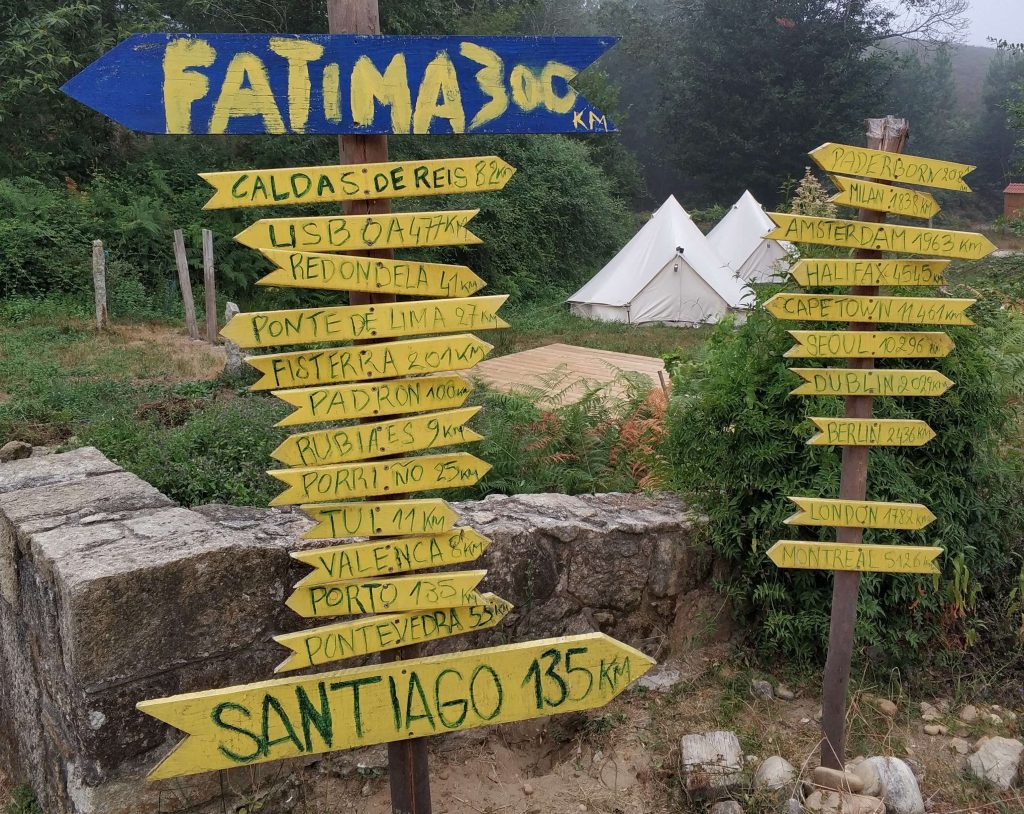In 2022, 438,000 people completed at least 100 kilometers walking or 200 by bike on the Route of Saint Jacques (Camino de Santiago). To understand the growing tendency of the figure, we can see that in 1990 the trip was done by 5,000 people and in 2000 by 55,000. In 2018 it was done by 327,000 and, although in 2020 and 2021 the figures suffered the impact of the COVID19 pandemic, in 2022 they returned stronger than ever and set a new all-time record of 438,000 pilgrims arriving to Santiago de Compostela.
But, what brings so many people to take the Camino to Santiago? In its medieval origins it was done mainly for spiritual reasons, seeking the intercession of the Apostle Santiago or the indulgence derived from the pilgrimage. And today many pilgrims still have a religious motive in their backpack. But for the great majority, the Camino is a journey within oneself, a time for reflection, shared effort and companionship. The Camino provides a very intense contact with nature through the landscape, but also with human nature through effort, kindness, hospitality, overcoming challenges and exchanging experiences with other walkers.

Its progressive revitalization during the second half of the 20th century has been associated with the latent desire in many people to recover the European roots, to go more slowly instead of running and to get things done with time and effort instead of instantly.
It can be explained in many ways but there will probably be 438,000 different reasons and they will all be good to go to this exceptional school of humanity for a few days.
One of the great wonders of the Camino is that it passes by almost all countries in Europe; there are more than 80,000 kilometers of marked ways. And although most of the people follow the so-called Camino Francés (the French Way) which crosses the Pyrenees and travels through northern Spain through Pamplona, Burgos and León to Santiago, other alternative routes are becoming very popular too, because they are a bit less crowded and also a little closer to the simplicity and inner peace that one looks for in this adventure.
The Portuguese Caminho, from Lisbon to Santiago, is especially recommended for those who want to enjoy a more personal experience, with more nature and not that many crowds. The Caminho passes through Santarem, Coimbra and Porto as the most relevant cities and can be seen very well detailed on the Gronze website (https://www.gronze.com/camino-portugues).

But we want to highlight a central section of it, which runs very close to the Oeste region, and which is especially recommended for those who want to live the part of the Caminho closest to nature. It is the stretch between Tomar and Coimbra. Tomar, the point of origin is a small city commanded by the Convento de Cristo, an imposing Templar castle, a UNESCO World Heritage Site, and one of the most beautiful examples of Manueline Gothic architecture. Coimbra is hustle, charm and small alleys to get lost. And, in between, 90 kilometers of Caminho through enchanted forests, along paths between fruit trees and small villages in which there is always a local willing to offer the pilgrim a few words of advice or any help needed. The signage is especially good, in part because the route is at the same time the Camino de Santiago going North and the Caminho de Fatima going South, so the signposts have the characteristic yellow arrow towards Santiago on one side and the blue arrow to Fatima on the other. That also causes interesting encounters between walkers in one direction and another, opposed in the direction, but united by a similar search.

And for those who want to have only an appetizer, with a child-friendly experience, you can consider visiting the Convento de Cristo in Tomar, eating at any of the nice restaurants in the pedestrian zone of the city, like O Tabuleiro for example, and making the first four kilometers, which run parallel to the Nabão river and are especially beautiful. Surely more than one after that appetizer will want to consider in the future trying other dishes of the Camino. Buen Camino!


